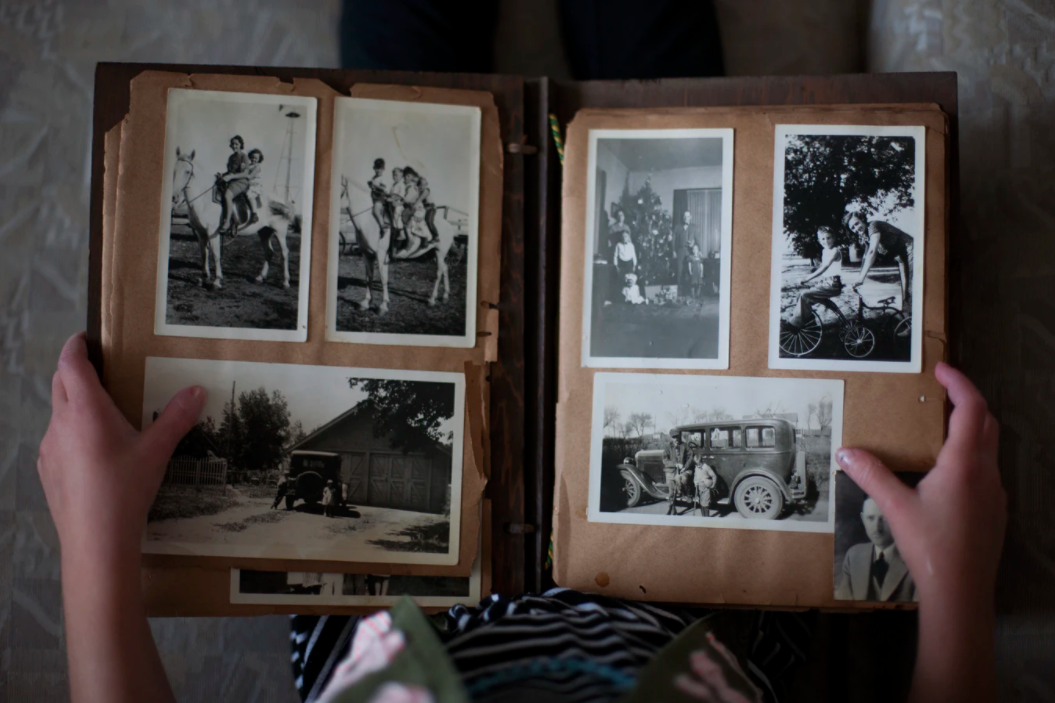We all have a box of memorabilia in the back of a drawer or closet. Inside are birthday cards, letters, travel journals, diaries, photos, and meaningful knick‑knacks. Year after year, this box collects more than just dust: it collects our memories. Piece by piece, it tells the story of our lives. This holiday season, we invite you to delve into your personal archives and use them as inspiration to write your autobiography or build your family tree.
Writing an autobiography or creating a family tree means doing a lot of research, which draws on cognitive processes like attention, reasoning, and memory. To write and type, you also need to coordinate your fingers, which activates the motor cortex (the brain region responsible for movement). By exercising your brain, you’re maintaining and strengthening your neural network, which protects against cognitive decline.
Not sure where to start? Follow our step-by-step guide!
Writing your autobiography
Penning an autobiography is a chance to reminisce and relive the moments that shaped your life. As you venture down memory lane, you also stimulate your neurons. Shall we?
1. Make an outline. One option is to structure your story around the major stages of life: childhood, adolescence, adulthood, and retirement.
2. Add basic information related to each of these periods: where you lived, where you went to school, where you worked, the names of friends and colleagues, etc. Also note your age and civil status for each period (single, children, etc.). This simple exercise will bring back so many memories!
3. Dig into your memories. Flip through family photo albums and read old letters. Crack open your high school diary or the journals you’ve filled over the years. You’ll find plenty of inspiration!
4. Jot down your memories. Don’t worry about relevance or chronology at this stage.
5. Sort the memories by major life stage, then trim any inconsequential details. Keep only what you feel is most important: the people and events that had the biggest impact on your life.
6. Ready to start writing? Recount your memories in your own words, using simple, moving language.
7. Add images. Personal photos are great, but there are also plenty of images and archives on the internet. Find shots of old schoolhouses, battle honours, Expo 67, the construction of the metro, the Eiffel Tower, and more. Can’t find the perfect image? If it’s feasible, visit the area and take new photos.
Creating your family tree
Learning who your ancestors were can take you on a fascinating and touching journey through time!
1. Sift through old documents. Letters, wills, baptism certificates, postcards, newspaper clippings, diaries, autobiographical texts, old contracts, marriage certificates, obituaries, family photos, ID cards, passports, military service books, announcements . . . Personal archives and the written heritage of our ancestors are valuable sources of information that can tell a remarkable story.
2. Reach out to relatives. Your distant first cousin or great-uncle may have documents that you can photocopy or digitize. With a bit of luck, they’ll also have plenty of memories to share—and maybe even a family secret or two!
3. Organize the information. Whether you’re using genealogy software (available for free online) or old-fashioned paper files, make sure to set up some type of filing system at the start of your research. Note down the necessary information for each relative, as well as your source (testimonials, deeds, archives, etc.).
4. Consult registers and archives. The Québec civil status register and parish registers, which contain baptism, marriage, and burial records from the earliest days of colonization, can be accessed online. You can also search the Quebec public archives via the Bibliothèques et archives nationales du Québec (BAnQ).
5. Join a genealogical society: Want to go one step further? Genealogical societies can help you complete your family tree by offering advice, tools, and techniques.
You may start to feel daunted by the scope of the project. If so, don’t hesitate to get feedback from a loved one. Show them your family tree or have them read passages from your autobiography. Discussing your project may help you remember long‑forgotten memories or reveal new details. You might even see your story in a new light!









